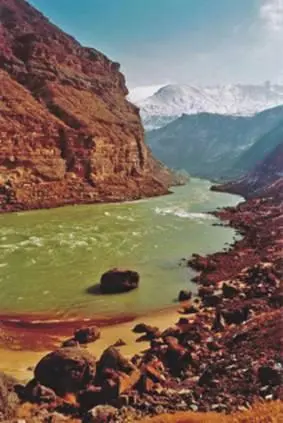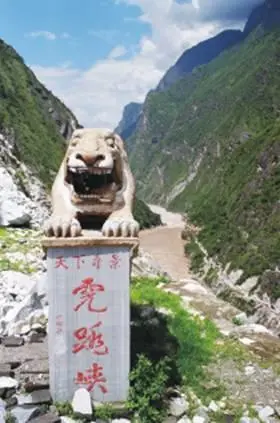Simon Foster - CHINA's Three Gorges & Xi'an
Здесь есть возможность читать онлайн «Simon Foster - CHINA's Three Gorges & Xi'an» весь текст электронной книги совершенно бесплатно (целиком полную версию без сокращений). В некоторых случаях можно слушать аудио, скачать через торрент в формате fb2 и присутствует краткое содержание. Год выпуска: 2010, Издательство: Hunter, Жанр: Старинная литература, на английском языке. Описание произведения, (предисловие) а так же отзывы посетителей доступны на портале библиотеки ЛибКат.
- Название:CHINA's Three Gorges & Xi'an
- Автор:
- Издательство:Hunter
- Жанр:
- Год:2010
- ISBN:нет данных
- Рейтинг книги:4 / 5. Голосов: 1
-
Избранное:Добавить в избранное
- Отзывы:
-
Ваша оценка:
- 80
- 1
- 2
- 3
- 4
- 5
CHINA's Three Gorges & Xi'an: краткое содержание, описание и аннотация
Предлагаем к чтению аннотацию, описание, краткое содержание или предисловие (зависит от того, что написал сам автор книги «CHINA's Three Gorges & Xi'an»). Если вы не нашли необходимую информацию о книге — напишите в комментариях, мы постараемся отыскать её.
CHINA's Three Gorges & Xi'an — читать онлайн бесплатно полную книгу (весь текст) целиком
Ниже представлен текст книги, разбитый по страницам. Система сохранения места последней прочитанной страницы, позволяет с удобством читать онлайн бесплатно книгу «CHINA's Three Gorges & Xi'an», без необходимости каждый раз заново искать на чём Вы остановились. Поставьте закладку, и сможете в любой момент перейти на страницу, на которой закончили чтение.
Интервал:
Закладка:

The Yellow River
Geology & Topography
Broadly speaking, with the Himalaya as the highest point in the west, the farther east you travel, the lower and flatter the land becomes, although there are mountainous outcrops across the country. Much of Xizang (Tibet) and Qinghai rest on the Tibetan Plateau, which has an average height of 12,000 feet and makes altitude sickness a serious possibility for travelers to this region. China holds half the world's limestone and the southwest's landscape is dominated by a limestone beltthat stretches all the way from Yunnan through Guizhou, Hunan, Guangxi and Guangdong and even extends to parts of Fujian. Here lies the inspiration for many a Chinese scroll painting, most notably in the Li River regionof Guangxi, where you'll find magnificently eroded karst pinnacles stretching for the sky.
Rivers
China has enough mountains and rainfall to provide a water source for most areas of the country, primarily distributed by its three major watercourses, although industry and the immense population has resulted in the pollution of many rivers and lakes. In spite of the generally high rainfall, droughts do occur, particularly in the arid northwest.
The Yangzi & Yellow Rivers

Tiger Leaping Gorge
The 4000 mile long Yangzi(known as changjiang , or Long River, in Chinese, an apt title for the world's third longest river) and the Yellow River(named for its silt-laden color) both run west to east, starting their lives high on the Tibetan Plateau. The Yangzi then turns south, skirting Szechuan and running through the mountains of Yunnan and makes its first bend through the 13,000-foot-deep Tiger Leaping Gorgenear Lijiang. Little by little the river gains strength and is a mighty expanse of water by the time it reaches Chongqing, where it commences its journey through the famous Three Gorges, now dammed at Sandouping, near Yichang. The Long River supplies the massive Dongtingand Poyang lakeswith fresh water and then continues through the mighty cities of Wuhanand the former imperial capital of Nanjing, before spilling into the sea at Shanghai. The Yellow River's source is close to the Yangzi's, but soon diverges, running some 3,400 milesthrough Gansu, Ningxia, Inner Mongolia, Shanxi, Shaanxi and Henan before emptying out through Shandong in the east.
The Pearl River
A third significant waterway, the Pearl River, starts in the mountains of southern Yunnan and flows through Guangxi, and then, joined by tributaries from the north and east in Guangdong, opens out into the Pearl River Delta which reaches the sea south of Guangzhou. This tropically fertile region is one of China's most intensively cultivated areas, banana palms filling seemingly every available piece of land.
Natural Resources
China has a wealth of natural resources, including coal, oil, natural gas and iron ore, mainly found in the northwest, although, as the country has developed and its energy needs have increased, it has shifted from being an exporter to a net importer of oil. Inner Mongolia, Shanxi and Shaanxi are all heavily mined for coal, while the bulk of the oil reserves are under the Taklamakan Desert in Xinjiang. The Chinese have known about the burning properties of coal far longer than we have in the West, and while it has aided the country's industrial development, recently many smaller mines have been closed in response to safety concerns. There are also precious metal and stone deposits to be found, particularly in the west, and these have been utilized since early times to produce tools and fine arts.
The Environment
Environmental degradation poses a very real threat to the nation as increasingly frequent dust stormssweep through the north of the country and the rivers in many cities run black. Despite reducing its heavy industry base and the grand Three Gorges Dam hydroelectric project(which creates as many environmental problems as it solves), China is one of the world's most polluted countries. The government is now starting to address these issues with projects like the Green Great Wallthat aims to combat soil erosion in the north of the country through reforestation, and by raising taxes on environmentally damaging products, from disposable wooden chopsticks to luxury cars. But there is still a long way to go.
Climate
Again, as you'd expect in such a vast country, there is much variety in China's weather, though away from coastal and mountainous areas it could be broadly categorized as a continental climate - that is, extremely hot in the summer and very cold in the winter.
The northenjoys roughly six months of heat, but has to endure cold weather for the rest of the year, with temperatures rarely creeping above freezing in Beijing between December and March. Almost all of the rainfall in this region comes in July and August. This part of the country is also subject to dust stormsduring the spring and summer months, which can last days and leave everything coated with a fine layer of dust. They are exacerbated by the deforestation and desertification of the land to the north and west.
China's northwestoffers the country's greatest extremes, from blistering 110°F in summer, to an arctic -45°F in winter. Whenever you come, you're unlikely to see much precipitation in this extremely arid region, which is home to the deserts of the Gobiand the Taklamakan.
Central Chinagets exceptionally hot and steamy in the summer. The " Three Furnaces” along the Yangzi - Chongqing, Wuhan and Nanjing - are renowned for their Turkish-bath-like summers, though Shanghai is barely any less stifling. The same region gets bone-chillingly cold during the short winter, made all the more so by the damp and lack of central heating south of the Yellow River. Although Shanghai is warmed marginally by the sea, it can still feel bitter in the winter months. Winter is the driest part of the year, though all seasons see plenty of precipitation in this part of the country.
The southhas something of a subtropical climate, with swelteringly hot and humid summers and comparatively mild winters that only last from January to March, though the farther you move away from the sea the colder it can get. The rainy season in the south varies according to exactly where you are, but generally falls between May and August. Hainan Island, nestled between China and Vietnam, lies on the same latitude as Hawaii and is warm throughout the winter and roasting in summer. The southeast coast is subject to typhoons(from taifeng , meaning great wind), the Asian equivalent of hurricanes, between June and October.
Flora & Fauna
China has a diverse range of wildlife befitting a country of its size, but if you come with great expectations you may be disappointed - there's less to see on a day-to-day basis than you'll find in some of the neighboring Southeast Asian countries. However, for those who have the time and energy to delve a little deeper, there are still treasures to be found and even a two-week city-based trip should show you some of country's offerings.
Causes for Concern
Читать дальшеИнтервал:
Закладка:
Похожие книги на «CHINA's Three Gorges & Xi'an»
Представляем Вашему вниманию похожие книги на «CHINA's Three Gorges & Xi'an» списком для выбора. Мы отобрали схожую по названию и смыслу литературу в надежде предоставить читателям больше вариантов отыскать новые, интересные, ещё непрочитанные произведения.
Обсуждение, отзывы о книге «CHINA's Three Gorges & Xi'an» и просто собственные мнения читателей. Оставьте ваши комментарии, напишите, что Вы думаете о произведении, его смысле или главных героях. Укажите что конкретно понравилось, а что нет, и почему Вы так считаете.












